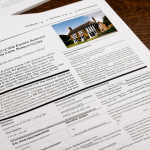Overview of Co-Living Spaces in the UK
Co-living spaces are an emerging trend in the UK housing market, offering a modern approach to communal living that combines shared spaces with private living quarters. This concept provides an alternative to traditional housing, promoting affordability and fostering community. As urban populations swell, co-living terms have gained traction, appealing particularly to young professionals seeking both cost-effective and socially enriching living conditions.
Recent years have witnessed a significant growth in the UK co-living market, driven by urbanization and evolving lifestyle demands. This change reflects a shift towards flexible living arrangements, where residents benefit from shared amenities and experiences that enrich their daily lives. Modern living ideals are thus seamlessly integrated into these spaces, offering individuals the opportunity to engage in culturally and socially vibrant environments while maintaining privacy in personal quarters.
In the same genre : Adapting your property portfolio for success: navigating the effects of emerging uk building regulations
Comparing co-living with traditional housing reveals advantages such as cost efficiency and community building. Unlike conventional rental setups, co-living often includes expenses like utilities and internet in one consolidated bill, simplifying the financial planning process. This model not only alleviates the stress of handling multiple payments but also provides modern living features like access to gym facilities, co-working spaces, and even social events, distinguishing it from standard housing options.
Financial Advantages of Co-Living
Co-living spaces provide distinct cost savings compared to traditional rental arrangements, primarily through shared expenses. In these arrangements, residents can benefit from an all-inclusive payment that encompasses rent, utilities, internet, and often additional services such as cleaning. This simplification aids in affordability, reducing the stress of managing various bills.
Additional reading : Assessing how future property tax changes will affect uk buy-to-let investors
Understanding the Cost Breakdown
In traditional housing, paying separate bills for utilities, internet, and other services can lead to unpredictable expenses. Co-living structures offer a consolidated approach that results in predictable monthly costs. This can be particularly appealing in urban centers where living expenses are notoriously high.
Flexibility and Lease Options
Lease flexibility in co-living arrangements further enhances affordability. Many co-living spaces offer shorter lease terms, which can range from month-to-month to yearly leases. This flexibility is advantageous to those who need temporary accommodation or those who prefer not being tied to long-term commitments.
Such financial structures have made co-living an attractive option for many, ensuring that having a roof over one’s head doesn’t equate to financial strain but rather offers a financially sound and manageable living situation.
Shared Amenities and Their Impact on Savings
Exploring co-living spaces highlights the significance of shared amenities that offer substantial financial benefits to residents. These amenities extend beyond typical housing features, contributing positively to a community living experience while cutting costs.
Types of Amenities
Common amenities in co-living spaces often include fully-equipped kitchens, entertainment areas, and laundry facilities. More upscale offerings may present fitness centers, co-working spaces, and communal gardens. These shared facilities allow individuals to enjoy benefits that would otherwise be costly in an independent setup.
Cost Reduction through Shared Facilities
By utilizing shared amenities in co-living arrangements, residents decrease their need to purchase individual appliances or pay for external services, culminating in notable cost savings. For instance, access to an inclusive gym facility negates the requirement for an expensive gym membership, significantly trimming one’s monthly expenditure.
Community Features and Expense Impact
Moreover, community-driven features, like group events or workshops, further enhance the value of co-living by promoting social interaction and personal development at no extra cost. This aspect supports a balanced lifestyle, augmenting emotional and social well-being while simultaneously alleviating the financial burden on residents.
Long-Term Financial Benefits of Co-Living
When considering co-living spaces, it’s important to explore the investment benefits they offer, particularly in terms of potential rental yields. An investment in co-living properties can lead to higher returns, primarily due to the efficient use of shared spaces which maximizes rental income. This, in turn, allows property owners to capitalize on the growing demand for flexible, community-focused living arrangements.
Another notable advantage of co-living investments is the pathway to financial independence. By engaging in this unique housing model, individuals can often meet their financial goals more swiftly and maintain greater lifestyle flexibility. The nature of co-living arrangements, which often includes shorter leases and all-inclusive payment structures, affords residents the freedom to allocate their finances towards savings, travel, or other personal projects without the constraints of traditional housing commitments.
Case studies highlight numerous successful investment scenarios within the co-living sector. For example, some investors have turned underutilized properties into thriving co-living communities, witnessing a substantial increase in property value and rental income. Such case studies illustrate the potential financial success and growth inherent in the co-living model, driven by its appeal to a diverse range of residents looking for affordable, community-oriented housing solutions.
Statistical Insights and Case Studies
Navigating the financial landscape of co-living spaces can be daunting, but statistical insights and real-life testimonials shed light on its monetary benefits. For instance, studies indicate substantial cost savings for residents, with some reports noting up to 30% reduction in housing expenses compared to traditional living arrangements. These figures emphasize the affordability inherent in co-living spaces, an appealing factor for many residents.
Testimonials from Residents
Residents frequently cite community and financial gains as primary advantages. Testimonials reveal that shared living not only alleviates the burden of multiple expenses but also fosters a support network. One resident shared how living in a co-living arrangement helped save enough for further education by cutting unnecessary expenditures on amenities readily available in their communal environment.
Research Findings on Co-Living
Research further supports the financially sound choice of co-living. Studies document that residents enjoy access to high-quality shared amenities without direct costs, translating to fewer expenditures in personal budgets. This communal living style notably enhances resource efficiency, making co-living an economical housing model for those seeking budget-friendly options that don’t compromise on lifestyle quality.
By synthesizing statistical data and real-world experiences, a compelling picture emerges: co-living spaces provide a viable, cost-effective alternative in today’s UK housing market, offering individuals both economic relief and a vibrant community life.
Practical Tips for Potential Co-Living Residents
Navigating the world of co-living arrangements can seem overwhelming at first, but with the right approach, it can become a seamless and rewarding experience. Understanding co-living best practices is key to maximizing the benefits of this modern lifestyle alternative.
Steps to Evaluate the Right Co-Living Space
When considering a co-living space, begin by assessing your financial planning needs and lifestyle preferences. Evaluate locations based on proximity to work or school, available shared amenities, and the overall vibe of the community. Engaging with current residents through testimonials or community events can offer insights into daily life and satisfaction levels within the space.
Financial Planning Tips
With cost savings being a significant draw, incorporate these into your budgeting process. Analyze how shared utilities and services impact your monthly expenditure, allowing for a streamlined allocation of funds. Plan for unexpected expenses by maintaining a contingency fund, ensuring affordability over the long term without financial strain.
Maximizing Savings and Benefits
To optimize the practical advantages of co-living, actively participate in community features, which often come at no additional cost. These include workshops, social events, or access to shared facilities like gyms, which further enhance financial benefits while enriching your personal and social life. By approaching co-living with mindfulness and strategic financial planning, residents can fully enjoy the economical and communal advantages it offers.







